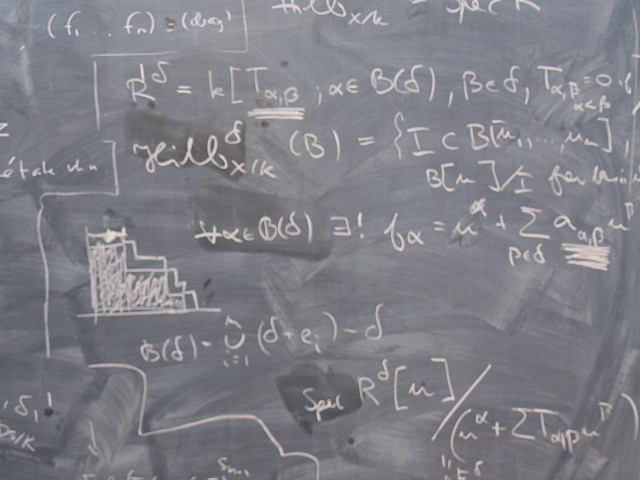Combinatorics and sets. Integers, divisibility, induction, recursionfunctions and relations. Number sequences, sums and difference equations. Graph theory, trees, walks and searches. Eulerian graphs, Hamiltonian graphs, planar graphs, coloring and chromatic number
IX1503 Discrete Mathematics for Business Engineering 7.5 credits
This course has been discontinued.
Decision to discontinue this course:
No information inserted
Information per course offering
Course offerings are missing for current or upcoming semesters.
Course syllabus as PDF
Please note: all information from the Course syllabus is available on this page in an accessible format.
Course syllabus IX1503 (Autumn 2011–)Content and learning outcomes
Course contents
Intended learning outcomes
GENERAL OBJECTIVES
After course completion the student should be able to
- formulate, analyze and solve problems in discrete mathematics significant to in the ICT sphere
- apply and develop discrete models with the aid of mathematical programming language
- review and comment a given solution to a problem- comment a discrete model and propose improvements
- make presentations of solutions of a discrete problem
DETAILED OBJECTIVES
After course completion the student should be able to
- compute the number of possibilities with simple selection principles (order/recurrence)
- compute permutations and combinations
- use set notations and Venn Diagrams
- decide whether a function is surjective, injective or bijective
- characterize relations in important classes, e.g. equivalence relation and partial order
- set up recursive models
- solve difference equations and use recursion when solution is not possible
- determine the minimum spanning tree
- determine shortest path in graphs
- set up graph models in problem solving (e.g. optimization and coloring)
Literature and preparations
Specific prerequisites
Completed upper secondary education including documented proficiency in Swedish corresponding to Swedish B and English corresponding to English A. For students who received/will receive their final school grades after 31 December 2009, there is an additional entry requirement for mathematics as follows: documented proficiency in mathematics corresponding to Mathematics A, and the specific requirements corresponding to Mathematics C, Civics A, Physics A and Chemistry A, and the specific requirements corresponding to Mathematics C, Civics A, Physics A and Chemistry A
Literature
Lars-Christer Böiers, Diskret Matematik, Studentlitteratur, 2003
Lars-Christer Böiers, Diskret Matematik Övningsbok, Studentlitteratur, 2003
Examination and completion
Grading scale
Examination
- INL1 - Assignment, 4.0 credits, grading scale: A, B, C, D, E, FX, F
- TEN1 - Examination, 3.5 credits, grading scale: A, B, C, D, E, FX, F
Based on recommendation from KTH’s coordinator for disabilities, the examiner will decide how to adapt an examination for students with documented disability.
The examiner may apply another examination format when re-examining individual students.
If the course is discontinued, students may request to be examined during the following two academic years.
Written exam (TEN1; 3,5 hp)
Problem assignments (INL1; 4 hp)
Examiner
Ethical approach
- All members of a group are responsible for the group's work.
- In any assessment, every student shall honestly disclose any help received and sources used.
- In an oral assessment, every student shall be able to present and answer questions about the entire assignment and solution.
Further information
Course room in Canvas
Offered by
Main field of study
Education cycle
Supplementary information
The teaching method is problem oriented and computer aided. The education time is evenly distributed among the three main topics
- conceptual understanding and modelling
- algorithms
- conclusions and synthesis.